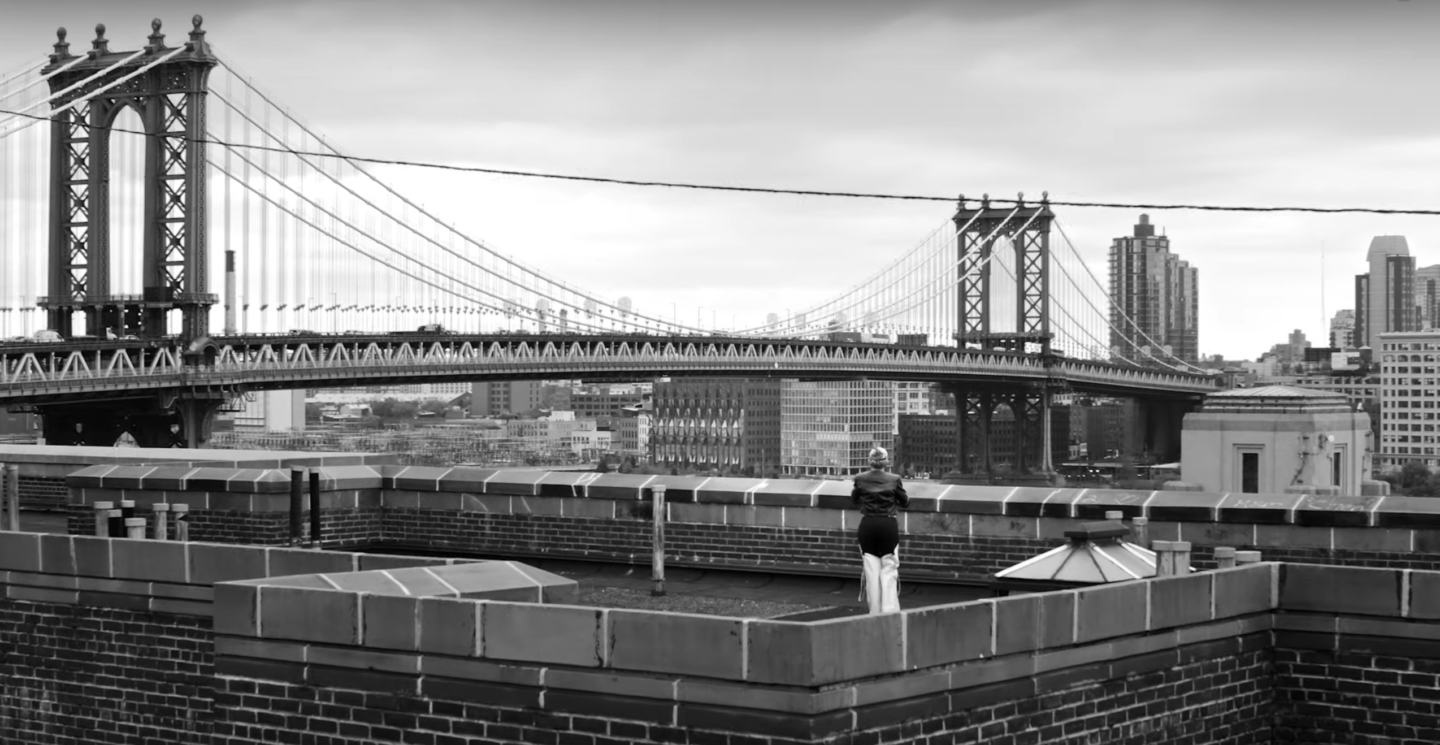When it comes to full-circle elements in Madonna’s career, New York City always serves as the infinity symbol, forever bringing her back into its fold. Thus, the monologue that commences the video for her latest single, “Crave,” seems a direct homage to the very city she knew would be bad, but also oh so good, for her. The very thing that could set her free and imprison her anew.
Accordingly, she remarks in that tongue-in-cheek tone of hers, “I am waiting for you. I have always been waiting for you. I’m attracted to danger. I crave it. Don’t we all want what we know is not good for us? What we know might break us in the end? And yet, we fly towards it. Always wanting the thing we cannot have.” Writing “The heart is a lonely hunter” on a slip of paper (a reference to Carson McCullers she’s used before, most notably on 1994’s “Love Tried to Welcome Me”) before director Nuno Xico features a shot of her setting a bird–well, a carrier pigeon–free, it’s an obvious metaphor for setting her own self free upon moving to New York in the late 70s, at the height of its seediness.
That her very first video, “Everybody,” was shot in the underbelly of Danceteria lends “Crave” an added layer of NYC nostalgia as well. And because New York renders everyone a ghetto ornithologist with its pigeon scene (thus the allusion to “flying towards” the thing that could be detrimental to us, as the badass pigeons of NYC have no qualms about doing), we have Swae Lee in the Richie Tenenbaum role, tending to many a flock on the rooftop (as opposed to just one hawk named Mordecai) as he receives Madonna’s yearning messages.
Madonna, too, does her fair share of standing on rooftops in the video, just as she did in the early days of her East Village and Lower East Side stint–the rooftop also being a dramatic emblem signifying rape for her. The admission of this immediate trauma upon arriving to the city was revealed in Harper’s Bazaar in 2013, in which she wrote, “New York wasn’t everything I thought it would be. It did not welcome me with open arms. The first year, I was held up at gunpoint. Raped on the roof of a building I was dragged up to with a knife in my back, and had my apartment broken into three times. I don’t know why; I had nothing of value after they took my radio the first time… I was poised for survival. I felt alive. But I was also scared shitless. I was defiant. Hellbent on surviving. On making it. But it was hard and it was lonely, and I had to dare myself every day to keep going.” So yes, to be sure, her heart was a lonely hunter–and still clearly is based on the sea of inferior humans who don’t have the good taste to acknowledge her greatness as opposed to commenting on her work only to say something negative.
It’s the type of plight that can’t really be recreated in the New York of now. For it is no longer a boot camp for feral survival, so much as a crash course in how to quickly forget all your ambitions in order to afford any of the boroughs, all moated islands for the rich. Madonna was a strictly Manhattan girl (though she will be taking her Madame X Tour to BAM in Brooklyn in September, a clear sign of the times). For she wanted to be where all the energy was coursing. In this sense, for her to center the video entirely around the Manhattan Bridge, best seen from the Lower East Side where she continued her youth in “petulance and precociousness” (as she phrased it to A Certain Sacrifice director Stephen Jon Lewicki, who shot the movie, where else, on the LES), is entirely telling.
A pointed mix of color and black and white shots is also indicative of Madonna’s blending of her New York past into her present–no matter where on the map she ends up landing (London and Lisbon being the only other cities where she’s invested the most time. And L.A. doesn’t really count, does it?). In some scenes down below in a vacant warehouse-like space dancing for no one but herself, in others making her way up the steps toward the roof to encounter Lee (himself a seeming extension of what New York represents: danger and excitement), Madonna is trapped between a state of two different forms of liberation. On the one hand, the total sense of creative liberty that comes from being an unknown, on the other the fame and fortune she had so long dreamed of as a means to fill the void caused by the death of her mother when she was a child.
As Lee reaches out his hand toward her in one of the final scenes, he declares, “It’s on the line girl, you’re risking everything.” And it’s a risk Madonna has taken again and again, ingrained in her from the very moment she rolled up to Times Square without any specific plan in mind other than world domination by way of the Big Apple.





















